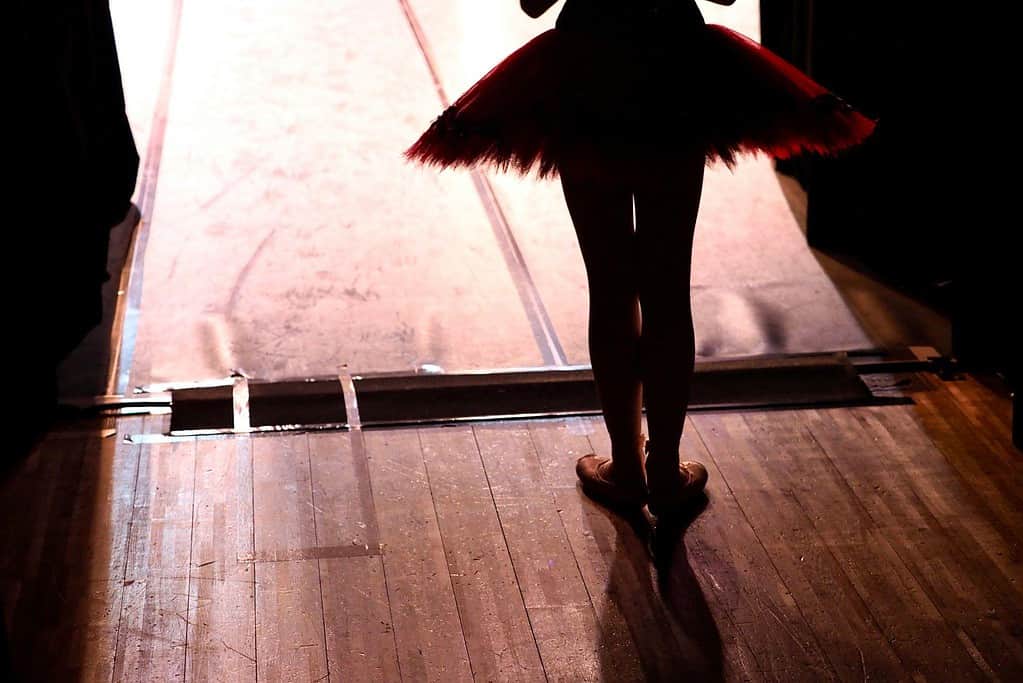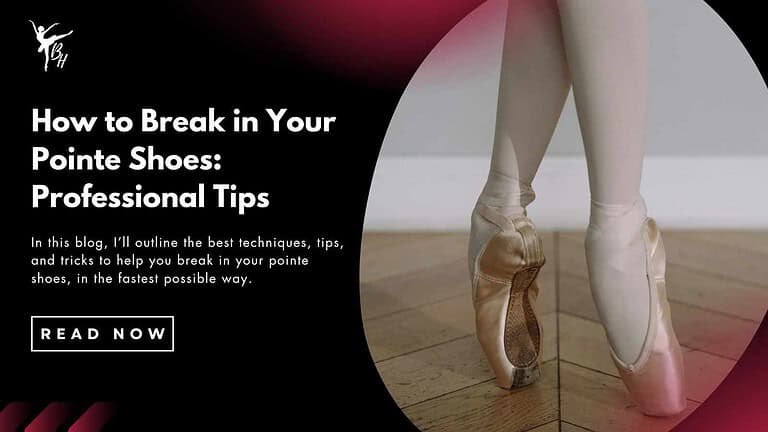Different Styles of a Ballet Tutu – The Best Guide
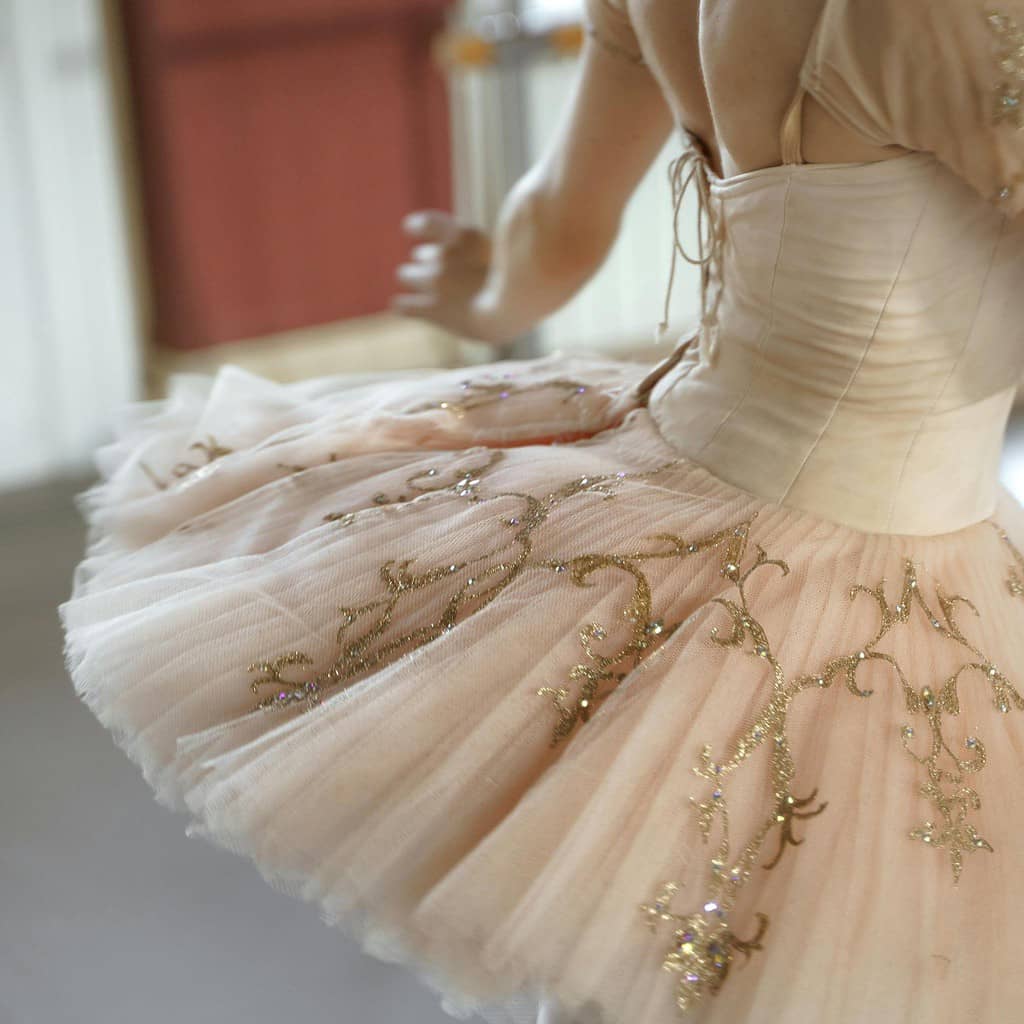
The iconic image of a ballet tutu often springs to mind when one thinks of ballet.
The ballet tutu serves as a symbol of grace, elegance, and beauty, and holds a special place in the hearts of all ballerinas.
However, it’s more than just costume attire, it’s an extension of a dancer.
Through their artistic expression, dancers breathe life and character into the stage, using the tutu as an element of their storytelling.
With the ever-changing designs and styles of the ballet tutu, there is no doubt that it is and always will represent the essence of ballet itself.
In this blog post, I will delve into the origin of the ballet tutu, including its composition, and the different styles available today.
WHAT IS A BALLET TUTU?
A ballet tutu is a costume worn by dancers while performing on stage. It consists of a skirt, often with an attached bodice or top section.
The primary purpose of a ballet tutu is to accentuate the fluidity and grace of a dancer’s movements while adding an overall beauty and visual allure to the performance.
Tutus are meticulously crafted, and intricately detailed with ornate decorations to match the dance style, character, and storyline of a ballet.
For some, the ballet tutu is truly magical.
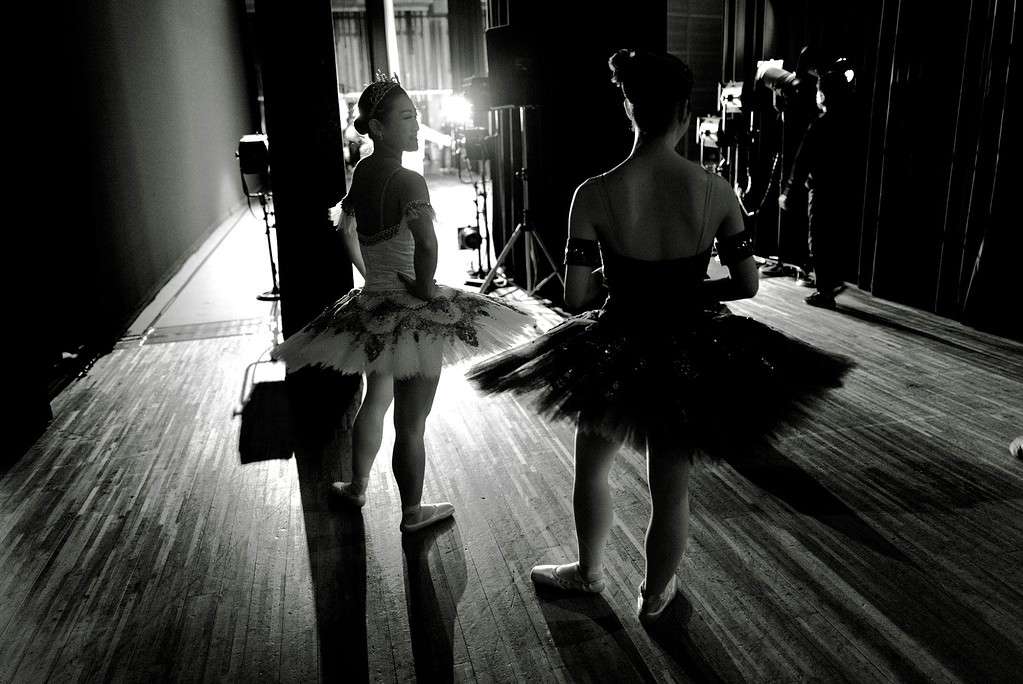
ORIGIN OF THE BALLET TUTU
The ballet tutu originated in the 19th century during the Romantic era of ballet.
It replaced the heavy and restrictive costumes previously worn by female dancers.
Marie Taglioni, a Swedish ballerina, debuted the iconic tutu in 1832 during her performance in ‘La Sylphide’ in Paris (lithograph below).
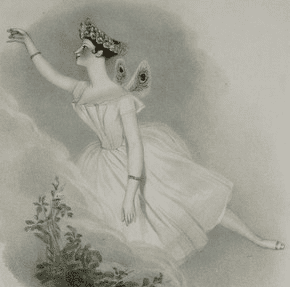
Created by costume designer Eugene Lami, Taglioni’s ethereal appearance, featured her gliding effortlessly in a calf-length skirt made of delicate tulle.
This marked a revolutionary moment in ballet history.
Fun Fact: Marie Taglioni’s performance in ‘La Sylphide’ introduced both the ballet tutu, and marked the debut of female dancers performing en pointe while wearing pointe shoes.
Taglioni’s tutu allowed for greater freedom of movement and showcased her intricate footwork, setting a new standard for ballet dancers.
However, its revealing nature caused a scandal among audiences, who were accustomed to more modest attire.
Despite the controversy, the tutu continued to evolve (becoming shorter and shorter) and female dancers became the forefront of ballet.
BALLET TUTU COMPOSITION
Ballet tutus are made from a mix of lightweight materials carefully selected to prioritise flexibility, fluidity, and aesthetic appeal.
Depending on the ballet style, the materials used will vary.
TULLE
Tulle is usually the primary fabric, as it is delicate, transparent, and has a remarkable ability to maintain its shape, making it perfect for the voluminous classical tutus.
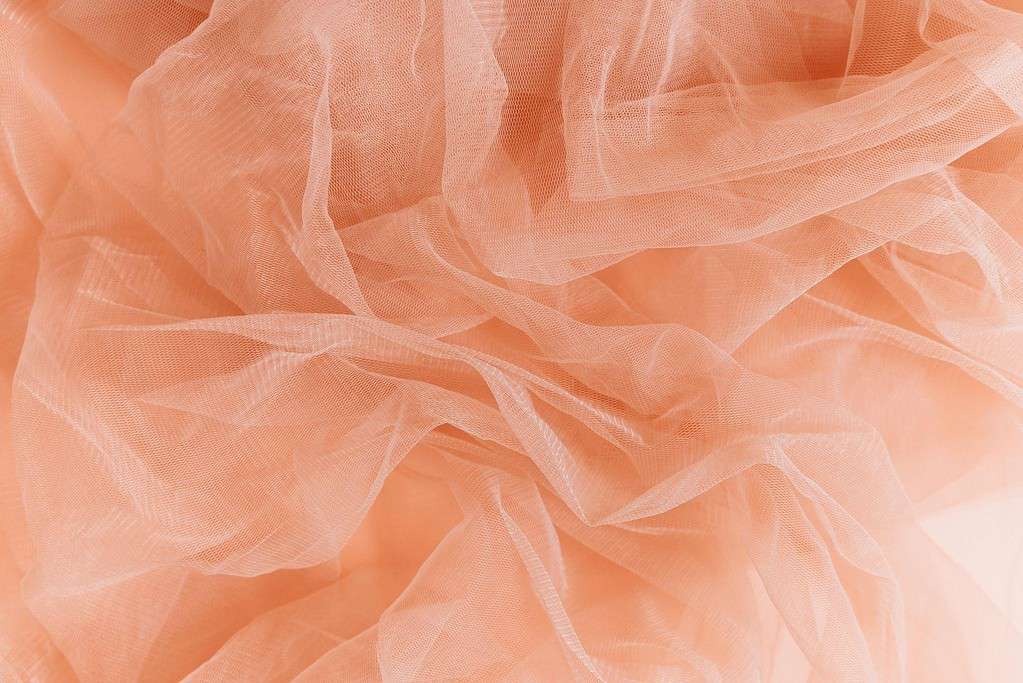
NETTING
Stiff netting provides the necessary underlying framework for the tutu, supporting the skirt’s structure, shaping the silhouette, and adding volume to the skirt.
MUSLIN
Muslin often serves as a foundational layer, allowing for the attachment of tulle layers and decorative elements.
LYCRA/SPANDEX
Then comes lycra or spandex, the stretchy materials from which bodices are commonly designed.
These fabrics offer a snug, form-fitting silhouette while allowing dancers the freedom to move with ease.
THE FINISHING TOUCHES
Finally, the finishing touches.
This includes the embroidery, beading, sequins, trims, and even feathers, each detail meticulously applied to add texture, and dimension, and enhance the tutu’s visual impact.
The result is nothing other than a breathtaking tutu, that is ready to bring life and magic to the stage.
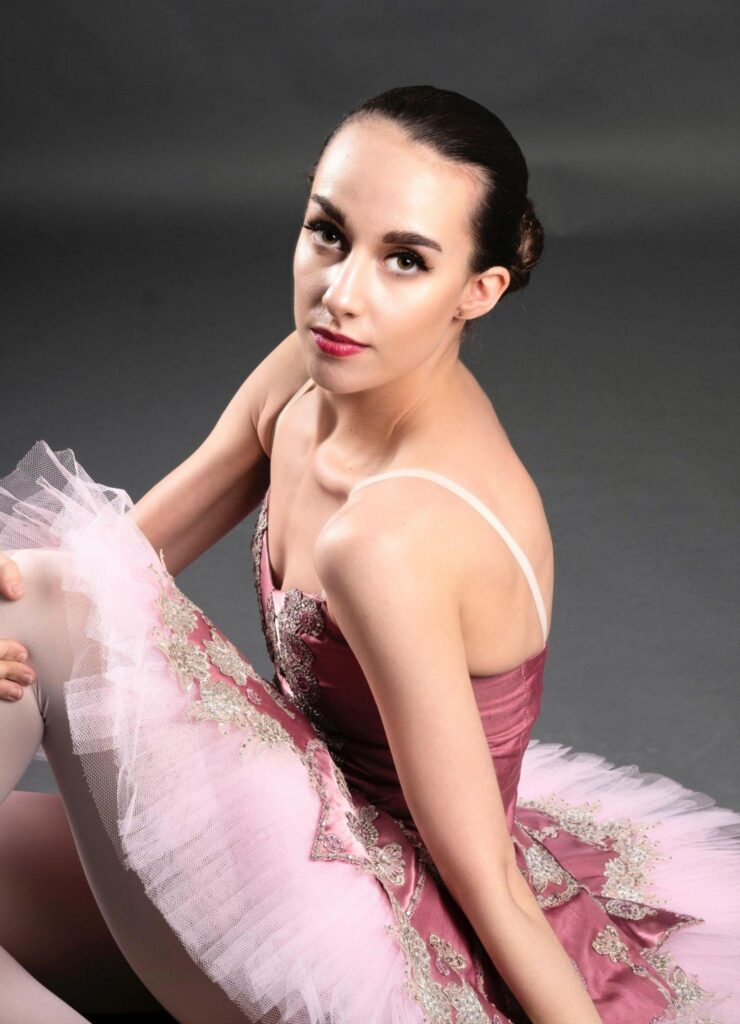
STYLES OF BALLET TUTUS
There are many different styles of ballet tutus, each reflective of the choreography, era, and aesthetic of a ballet.
CLASSICAL TUTU
Classical tutus, aka the pancake tutu (yes, they look flat like a pancake) are characterised by their short, stiff, and flat skirt, made of multiple layers of stiff tulle.
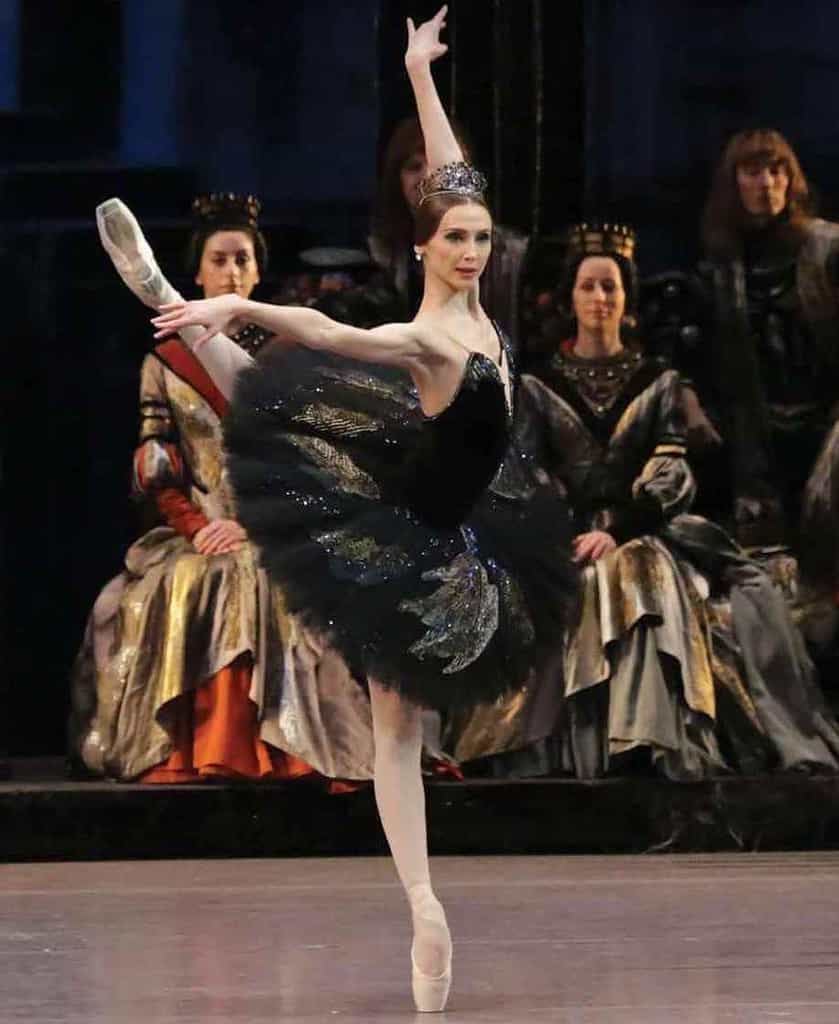
They’re usually positioned at the dancer’s waist or just below.
Due to their short skirt length, classical tutus are perfect for accentuating a dancer’s legs, lines, and intricate footwork.
Classical tutus are often worn by princesses and fairies, and can be seen in classical ballets like ‘Swan Lake’, and ‘The Nutcracker’.
ROMANTIC TUTU
The romantic tutu features a longer, softer skirt that reaches just below the knee. It is usually made of soft tulle and creates a more ethereal and flowing look.
Romantic tutus are often worn in ballets from the Romantic era, such as ‘Giselle’ and ‘La Sylphide’.
BELL TUTU
The bell tutu is a variation of the classical tutu with a slightly softer appearance, featuring a skirt that flares out in a bell-like shape.
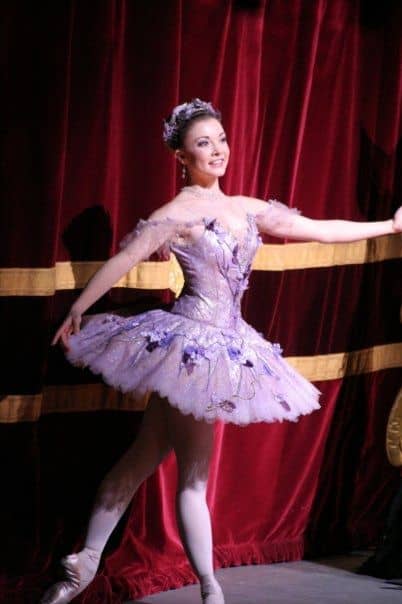
They often have a slightly longer hem at the back compared to the front.
Bell tutus are commonly worn in ballets like ‘Sleeping Beauty’ and ‘Cinderella’.
PLATTER TUTU
The Platter tutu features a skirt that extends horizontally from the dancer’s waist, resembling a plate or platter, and is typically made of layers of stiff tulle or netting.
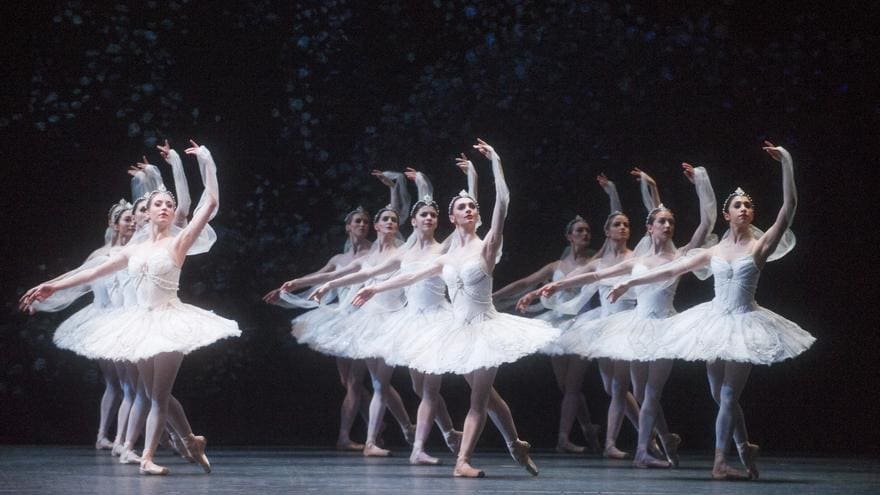
Platter tutus are often used in grand ballets such as ‘Don Quixote‘ and ‘La Bayadere’.
BALANCHINE TUTU
The Balanchine Tutu, aka the powder puff tutu, is named after the famous choreographer George Balanchine.
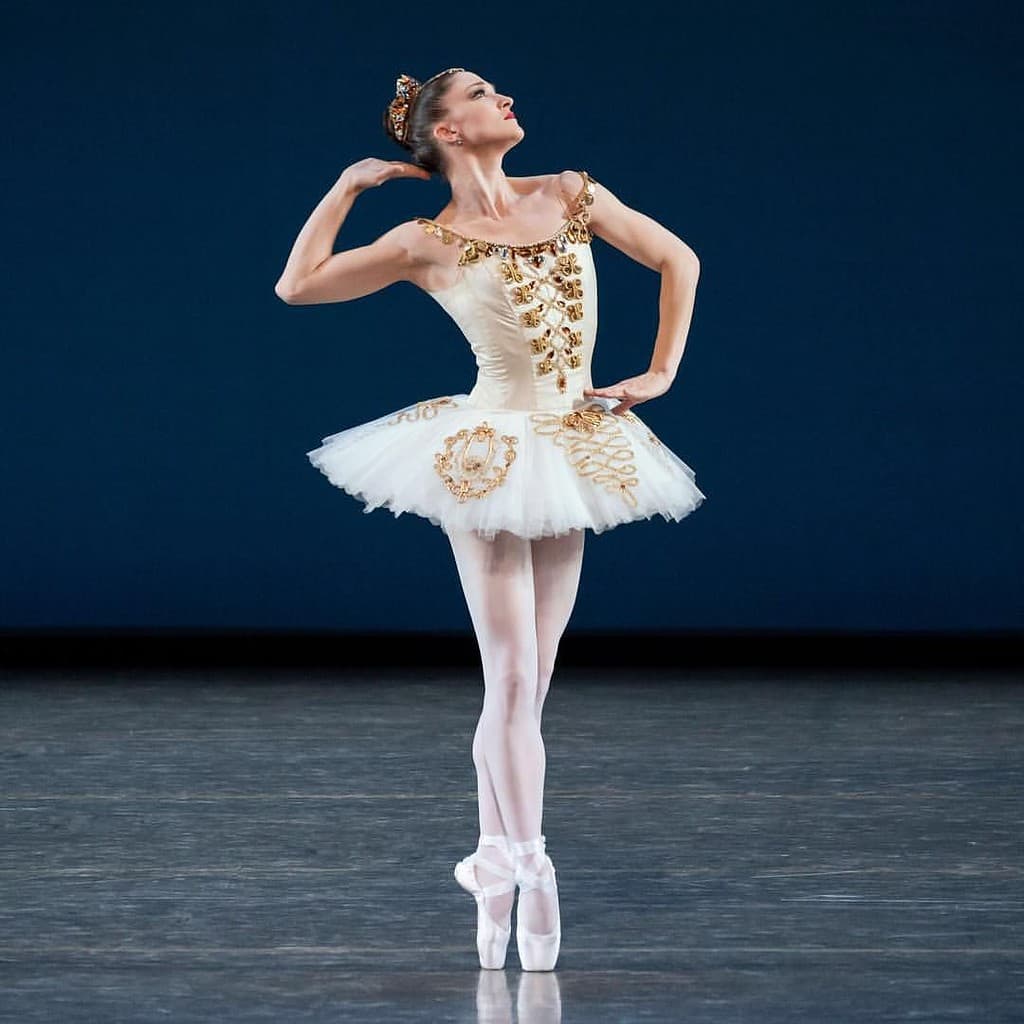
It’s a variation of the classical tutu but with a shorter, softer, and more angular skirt.
Balanchine tutus are often worn in Balanchine’s choreography and both neoclassical and contemporary ballets.
REHEARSAL TUTU
A rehearsal tutu usually includes only the skirt portion, offering dancers a practice tutu that mimics the sensation of wearing a complete tutu.
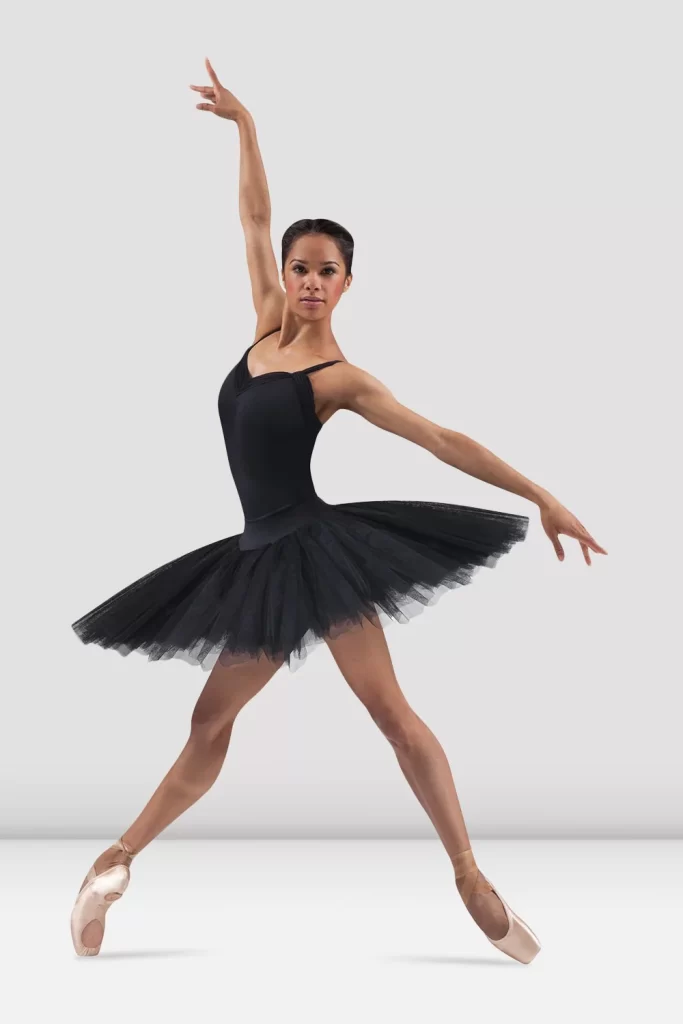
As a result, these tutus play a crucial role in pas de deux rehearsals.
Consequently, allowing dancers to acclimate to the additional weight and volume of the tutu while partnering with another dancer.
They also help in developing spatial awareness, particularly within the corp de ballet, when practising in the studio during transitions, formations, group scenes, and choreography.
HOW TO CHOOSE THE RIGHT BALLET TUTU
FIT AND COMFORT
When selecting a tutu, it’s crucial to ensure it provides a proper fit.
A well-fitted tutu should offer a form-fitted bodice and a skirt length tailored to your specific height.
In other words, it shouldn’t be too loose, as this can cause the tutu to shift during movement, nor should it be too tight, to the point where it restricts movement and cuts off your oxygen.
The right size and fit will give you the comfort and confidence to dance and look your best.
DESIGN, STYLE, AND EXTRA BLING
If you’re portraying a specific role or dancing a particular style of ballet, the design of your tutu should complement and enhance that role or style.
Keep in mind that a romantic style tutu is better suited for a ballet like ‘Giselle’ than ‘Sleeping Beauty’.
Design and style are important as they help give authenticity to your costume.
Similarly, when adding sparkle or accessories, choose items that complement and align with the character or theme of the performance, giving you more depth to your portrayal and that extra shine on stage.
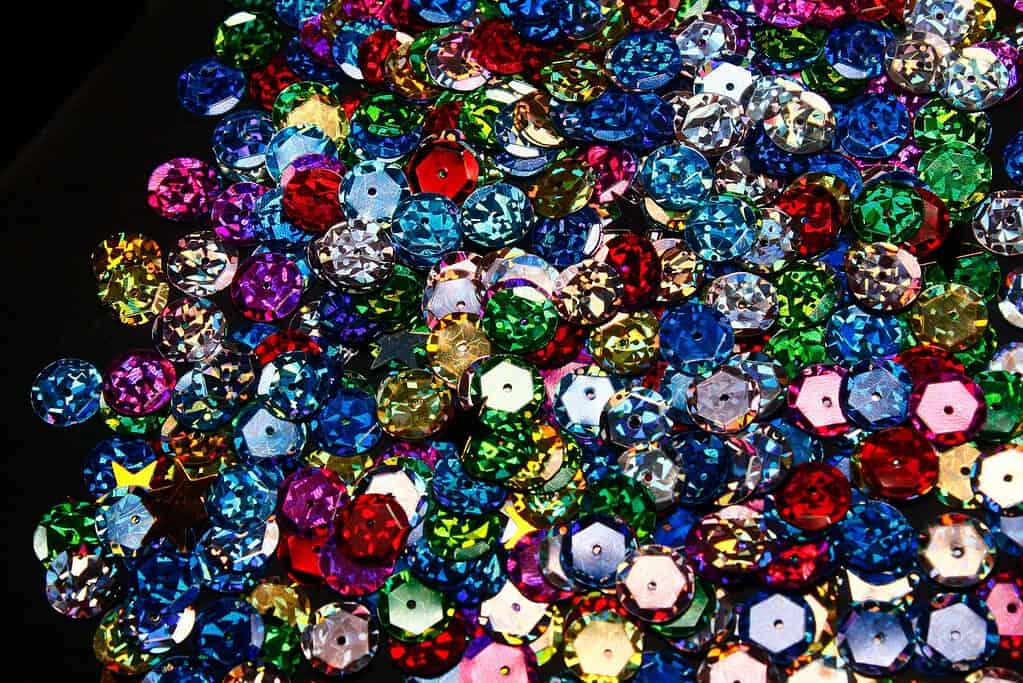
Be cautious not to overdo the bling, as excessive embellishments can distract from your dancing, and may lead a trail of beads and sequins on the stage floor by the end of the show.
BUDGET-FRIENDLY OPTIONS
Ballet tutus can be quite pricey, reflecting not only the cost of materials but also the craftsmanship involved.
While basic tutus may start at a few hundred dollars, high-quality options crafted with fine fabrics, intricate details, and custom measurements can easily exceed this price range.
It’s essential to remember that quality often comes with a higher price tag. However, if you’re working within a budget, there are still options available:
TIPS FOR BALLET TUTU CARE AND MAINTENANCE
While ballet tutus are the essence of beauty and elegance on stage, behind the scenes, they require meticulous storage and cleaning.
STORAGE
Tutus are often hung upside down or stacked on top of each other or in tutu storage bags, to prevent gravity from causing them to lose their shape and droop.
This is an irreversible fate once it occurs.
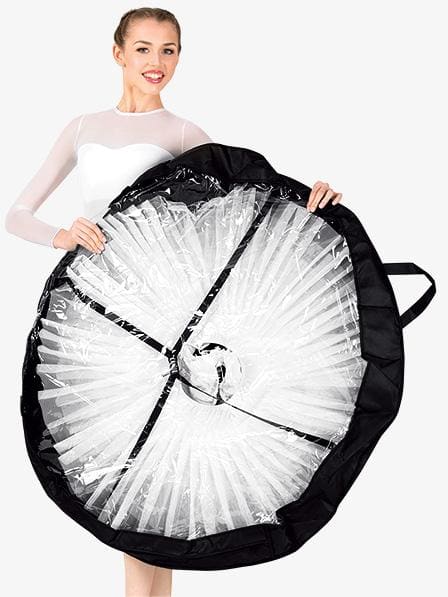
CLEANING
Given the intensity of stage lights and the physical exertion of dancers, sweating is common.
Due to the delicate materials and ornate details, cleaning options are limited to hand washing and steaming.
Tutus are often recycled over the years, passing from one performance to another and from one dancer to the next.
Hence, the importance of proper CLEANING.
BALLET TUTU FAQS
WHAT DOES TUTU MEAN IN BALLET?
The word ‘tutu’ is believed to have originated from the French term ‘cucu’, which was a playful term used to refer to a child’s bottom or derriere.
It is thought that the term was initially applied humorously when ballet skirts became shorter, allowing the audience to see more of a woman’s figure.
WHY DO BALLERINAS WEAR TUTUS?
Ballerinas wear tutus to highlight their movements and lines, making their footwork and leg techniques visible to the audience.
Ballet tutus also enhance the storytelling and aesthetics of a performance, adding elegance and tradition to the audience’s experience.
DO BALLERINAS PRACTICE IN TUTUS?
Ballerinas often practise in tutus both during studio rehearsals and on stage.
This provides them with the sensation of wearing a real tutu (for performance purposes). In other words, practicing in a ballet tutu serves as a valuable tool for refining movement.
This is especially true when working with partners or within a group.
WHAT ARE BALLET TUTUS MADE OF?
Ballet tutus are typically made from a combination of fabrics and materials including tulle, netting, lycra and spandex, to create a specific aesthetic and support a dancer’s movements.
WHAT IS THE DIFFERENCE BETWEEN A TUTU AND A SKIRT?
The main difference between a tutu and a skirt lies in the construction, purpose, and use.
Tutus are typically worn for performances and rehearsals, chosen for specific roles and ballet styles.
On the other hand, ballet skirts are often worn as part of a dancer’s uniform, for class and rehearsal, providing more coverage, and a means of artistic expression and fashion.
Unlike tutus, ballet skirts are not crafted from tulle and are not meant to be voluminous.
Instead, they are made from flexible materials like chiffon to ensure comfort and freedom of movement.
HOW LONG DOES IT TAKE TO MAKE A BALLET TUTU?
Typically, a basic classical tutu can take around 20-30 hours to construct. But more elaborate designs with intricate embellishments or decorations can take 50+ hours.
Making a ballet tutu is a labour-intensive process that requires patience, skill, and attention to detail.
At the end of the day, it takes as along as it takes!
WHERE DO YOU BUY A BALLET TUTU FROM?
When buying a ballet tutu, cheaper is only sometimes better.
I’d recommend avoiding shopping for cheap options from AliExpress or Amazon.
These tutus won’t often fit properly, will have poor-quality construction, and will probably look cheap and tacky.
Instead, it’s worth investing in tutus from reputable sources such as dancewear stores, online retailers specialising in dancewear.
Alternatively, you can also try ballet companies or schools, or even custom tutu designers who can create a unique piece tailored to your needs.
PLATTER TUTU VS PANCAKE TUTU?
In ballet, the platter tutu and pancake tutu are popular styles with distinct differences.
The platter tutu features a flat, horizontal shape extending from the hips, showcasing a dancer’s legs and technique. It’s often used in classical performances such as Swan Lake for a clean, traditional look.
The pancake tutu, while similar in its flat, horizontal structure, is firmer and more structured due to multiple layers of tulle and a wire hoop. This tutu offers a dramatic, eye-catching appearance, ideal for grand performances such as Don Quixote.
The choice between a platter tutu and pancake tutu depends on the desired aesthetic and specific choreography needs.
WRAP UP
Ballet tutus have graced stages worldwide with their elegance and grace.
These exquisite costumes are not merely decorative; they are essential tools for dancers to bring stories and characters to life on stage.
As the dance world evolves, the ballet tutu also undergoes constant transformation.
However, amidst its ever-changing design, one thing remains constant: the ability of ballet tutus to captivate and enchant us with their timeless beauty.
